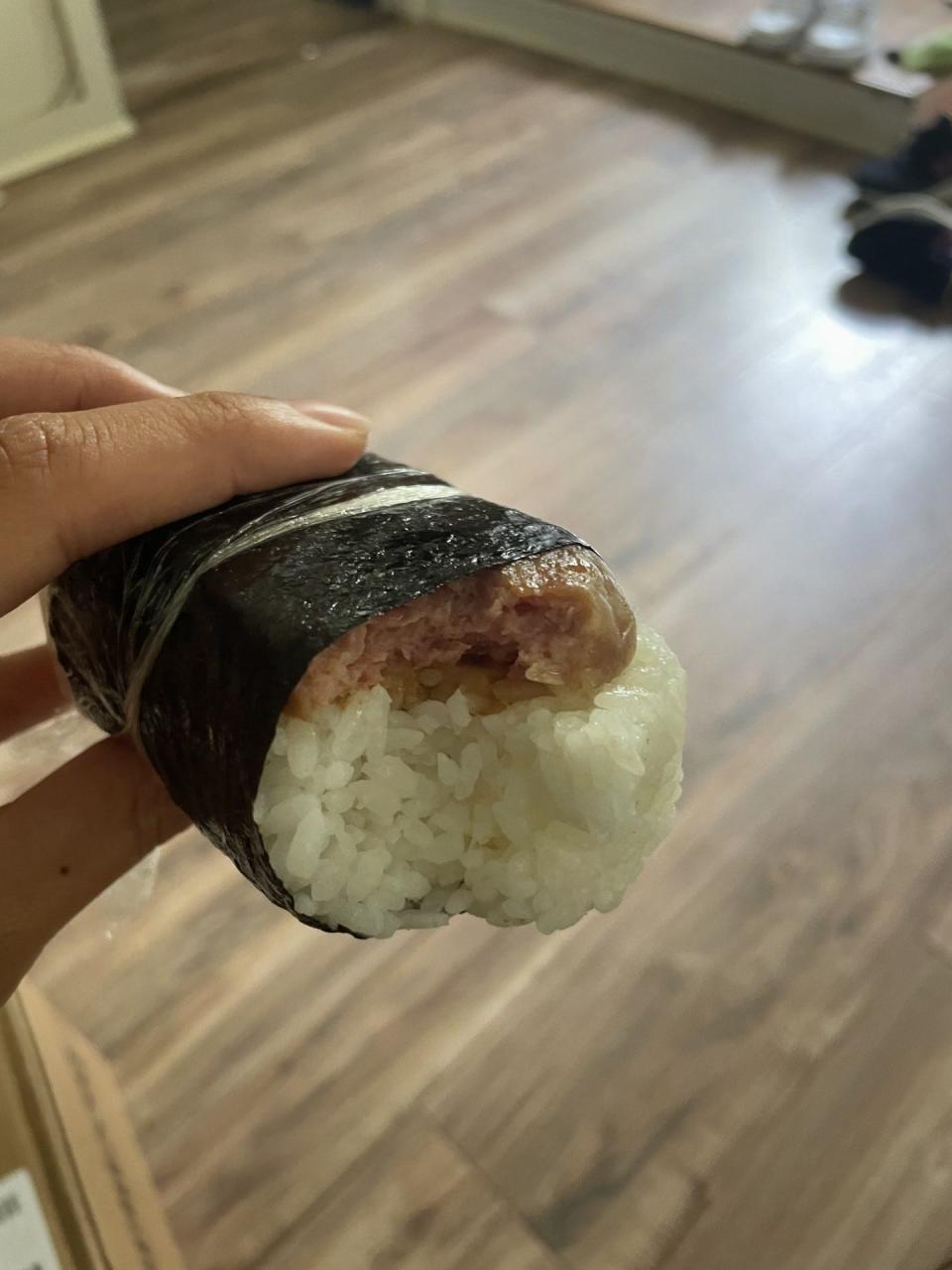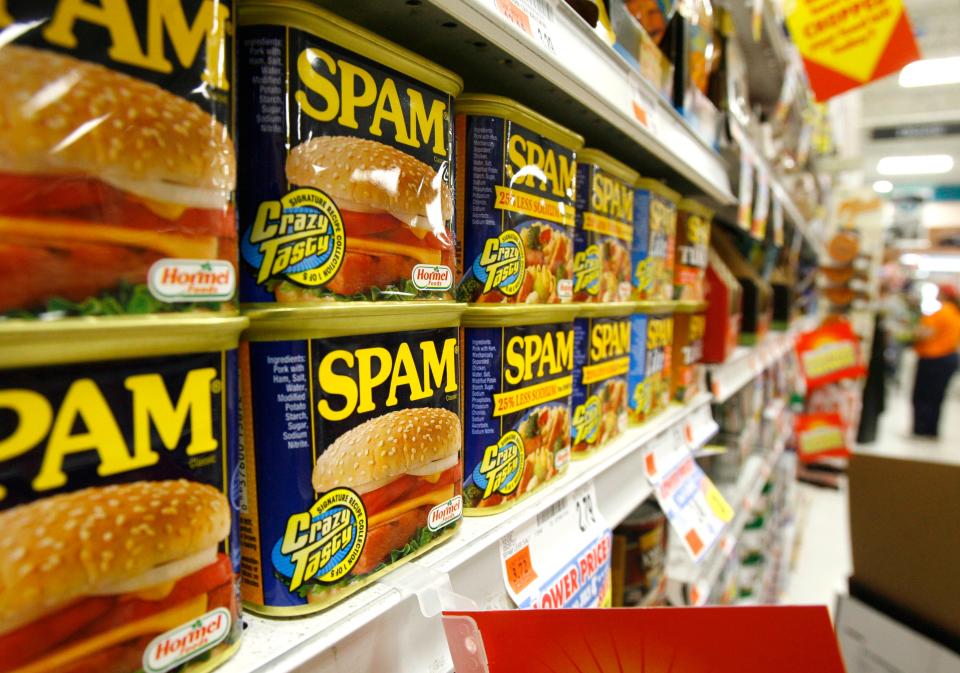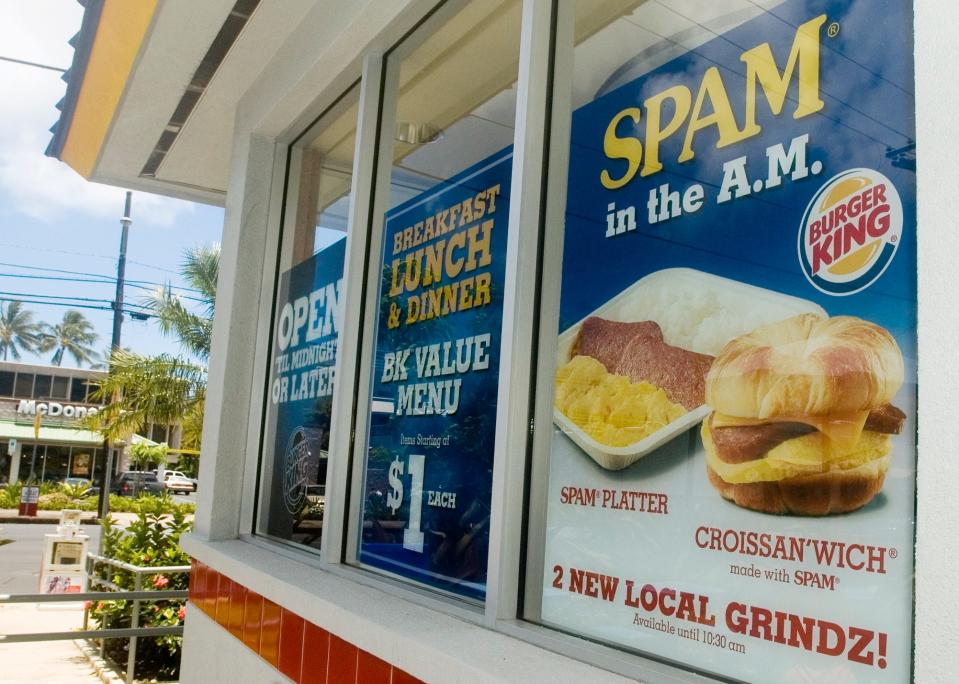Eat like a local: The story behind why Spam musubi is so popular in Hawaii
When hunger hits, and you’re looking for something quick and delicious – maybe after a morning well-spent at the beach – you can reach for a Hawaiian staple: a Spam musubi.
The handheld snack can be described as Spam sushi – if you replace the raw fish with canned pork. Typically the salty Spam is caramelized in a sweet and savory sauce and lies on a bed of white rice. The snack is wrapped neatly with a piece of nori or dried seaweed.
The origin of the Spam musubi is murky, but some have suggested it was created by Barbara Funamura, a Japanese-American woman from Kauai, or during the Japanese internment camps during World War II.
One thing we know for certain is that the cheap snack prevailed. Spam musubi is still so beloved that it even has its own national day – and you can definitely thank Hawaii for that. Since 2021, every Aug. 8 is considered National Spam Musubi Day.
“It is such an iconic item,” said Scott Gamble, vice president of L.H. Gamble Company, the Spam supplier for all of Hawaii.
Why is there a National Spam Musubi Day?

Oahu-founded food franchise L&L Hawaiian Barbecue started the holiday during COVID.
“The impetus was to celebrate the iconic item … since it’s so unique to Hawaii,” said L&L’s marketing director Brandon Dela Cruz.
On an average day, L&L’s in Hawaii and the mainland sell about 15,000 Spam musubis, which are made to order and always cooked in a special sauce.
The musubi is just one way Hawaii residents enjoy their Spam. The canned meat can be found chopped up in fried rice, sliced in saimin soup, or served more simply with eggs and rice for breakfast.
Spam is so ubiquitous in the islands that Hawaii consumes the most Spam per capita at about 7 million cans a year, showcasing how it’s a part of Hawaii’s unique history and heritage.
Most people who grow up in Hawaii consider Spam to be their comfort food.
“For me as a kid, I was a really picky eater but for some reason I enjoyed Spam,” said Mark Chee, who was born and raised in Hawaii and currently lives in Missouri. “It was the only meat I ate for a long while so instead of a ham sandwich, it was a Spam sandwich.”
“I enjoy Spam in local dishes because for one, it's delicious, but I also grew up with it and it's pretty much been a staple in my diet forever,” he added.
More: Cheap eats in Hawaii: 8 of the best local dining spots in Waikiki
What’s the history of Spam in Hawaii?

Spam hit shelves in the mainland U.S. in 1937 during the Great Depression as an inexpensive meat product. It didn’t make its way across the Pacific to Hawaii until World War II, when Pearl Harbor became a critical U.S. naval base and military personnel brought the canned luncheon food with them.
Hawaii quickly embraced spam since most people were already familiar with it from the war, which also happened in places such as Guam.
“It kept well over time. It was very versatile,” said Gamble. “There’s a lot of limitations with Hawaii being so separate from the rest of the U.S. when it comes to food preservation.” (Spam can last up to five years from when it was manufactured, according to Hormel.)
Like with Spam musubi, much of Hawaii’s local cuisine is made up of the foods from the different cultures that came to Hawaii as foreign laborers on plantations growing crops like sugar and pineapple in the 19th century.
“(Local cuisine) is much more than fusion; it’s a melting pot of a love of food,” said Hawaii-born Syndi Halualani-Texeira, co-owner of Kuleana Communications.
To her, Spam represents “family, friends, and culture.”
“Spam has been a staple in my family since I was a kid,” she said. “I grew up eating Spam. My grandmother would cook it a million different ways. Coming from a plantation family, my grandparents introduced me to Spam. It was inexpensive and could feed our large family. We thought Spam was the best thing next to rice.”
How popular is Spam in Hawaii?
Besides National Spam Musubi Day, Hawaii shows its love for Spam in April with the two-week-long Waikiki Spam Jam Festival. For the block party, people hit the streets of Waikiki in Honolulu dressed in Spam-inspired costumes and restaurants serve up Spam dishes.
Spam sales have always been consistent in Hawaii, Gamble said. During COVID, partially because of supply chain issues, L.H. Gamble Company couldn’t keep up with the demand.
"I think Hawaii folks love Spam because it is versatile and can be used in a variety of dishes from breakfast to dinner,” said Char Malapitan, who was born on Oahu but now lives in Boston. She remembers her mom cooking Spam with rice and eggs for a quick breakfast or lunch when she was growing up.
The classic Spam and less sodium Spam continue to dominate as the islands’ most popular flavors. Spam’s popularity in Hawaii has even inspired different flavors, such as teriyaki Spam and the discontinued Portuguese sausage Spam. (Spam tocino was made for Spam’s Filipino customer base.)

These days, it’s easy to get your Spam fix in Hawaii. Grab a musubi for a few bucks from any gas station, grocery store or local eatery like L&L Hawaiian Barbecue. Even national chains like Dunkin’ Donuts and McDonald’s serve up Spam at their Hawaii locations.
Hawaii expats to the mainland brought their love of Spam musubis with them. L&L locations in California added Spam musubis to their menus in 1999 after people were asking.
“In adulthood, when I have a Spam musubi, it takes me back as a kid,” said Gamble.
Kathleen Wong is a travel reporter for USA TODAY based in Hawaii. You can reach her at kwong@usatoday.com.
This article originally appeared on USA TODAY: Why is Spam a big deal in Hawaii? The story behind the Spam musubi

